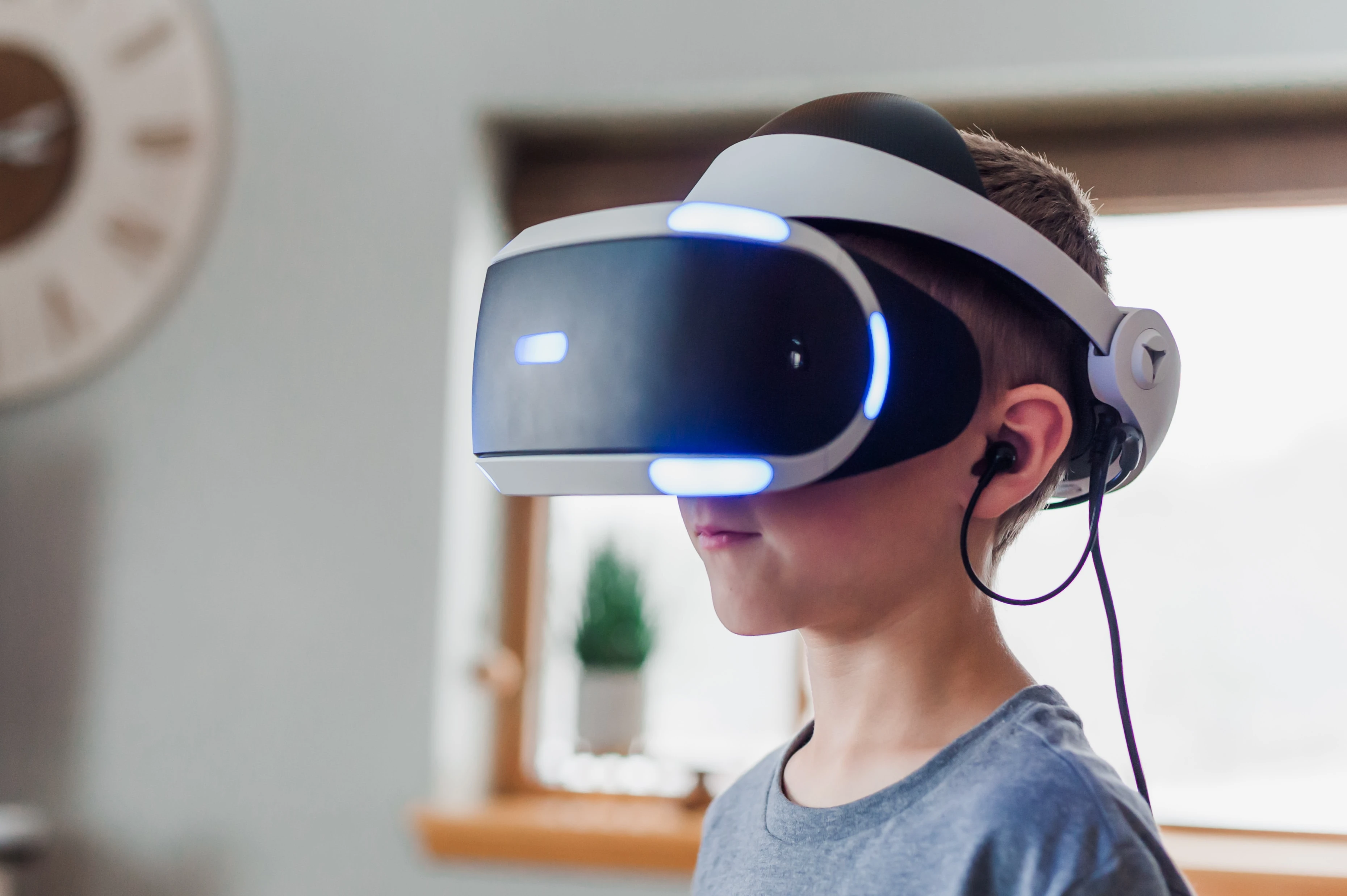
This website uses cookies
We use Cookies to ensure better performance, recognize your repeat visits and preferences, as well as to measure the effectiveness of campaigns and analyze traffic. For these reasons, we may share your site usage data with our analytics partners. Please, view our Cookie Policy to learn more about Cookies. By clicking «Allow all cookies», you consent to the use of ALL Cookies unless you disable them at any time.
In recent years, Virtual Reality (VR) technology has carved its niche within the realm of medicine, demonstrating extensive potential in the treatment, rehabilitation, and diagnosis of various diseases. Within this context, we observe how VR contributes to the enhancement of the quality of medical care, offering innovative possibilities for patients and healthcare professionals alike.
In this scenario, VR is not merely a technical adjunct but a transformative medium, fostering novel methodologies and approaches within medical science. It serves as a gateway to immersive, interactive experiences that have the potential to redefine the paradigms of medical treatment and patient care, bringing forth advancements that were once considered the realm of science fiction.
This technology intertwines visual, auditory, and tactile experiences, creating a multidimensional space where patients and doctors can interact in unprecedented ways. The medical profession is on the brink of a new era, where VR stands as a beacon of progress, opening up realms of opportunities and pathways to holistic, comprehensive, and nuanced healthcare solutions.
In this advanced juncture, we will delve into the myriad of possibilities that VR holds in medical science, exploring its implications, applications, and transformative potential in the healthcare sector. We'll delve deep into the innovations that are not just improving the quality of medical care but also paving the way for groundbreaking medical discoveries and therapeutic techniques, rewriting the norms of medical science for a new age.
Virtual Reality: A New Era in Pain Therapy
Research in the field of VR is pioneering its use for pain alleviation, potentially reducing or even substituting the need for medication. In particular, studies conducted at Stanford University have highlighted the capability of VR to significantly diminish pain sensations in patients, offering a fresh, innovative method of pain management.
The incorporation of VR in pain therapy signifies a groundbreaking shift in pain perception and management, providing a multifaceted approach to a universal medical challenge. Through immersive experiences, VR provides a distraction for the mind, altering the perception of pain, and, in some cases, introducing therapeutic interventions that can modify the patient's response to painful stimuli.
Stanford's exploration in this domain is not merely a venture into pain distraction but an intricate pursuit to understand the neural mechanisms of pain and to develop VR interventions that can significantly modify the pain experience. This involves a combination of visual, auditory, and sensory stimuli that transport the patient into alternate realities, allowing for a form of 'cognitive escapism' that can significantly reduce pain sensations.
By employing VR as a therapeutic tool, we are entering a new dimension in medical treatment where the conventional boundaries of pain therapy are being expanded. This cutting-edge approach represents a paradigm shift, where the synthesis of technology and medicine fosters an environment that empowers patients and healthcare providers to tackle pain with novel strategies, providing a beacon of hope for those grappling with chronic pain conditions. The innovations stemming from these studies herald a future where pain management is more personalized, multifaceted, and effective, heralding a new era in medical science and pain therapy.
Rehabilitation and Recovery through VR
In medical institutions such as the Cleveland Clinic, rehabilitation programs based on VR are being successfully implemented. These technologies aid in enhancing motor skills and coordination in patients post severe injuries and surgeries, offering step-by-step, individualized therapy.
The Dawn of VR-Based Rehabilitation
Virtual Reality is ushering in a transformative approach to rehabilitation, allowing for personalized and dynamically adjustable therapy modules, tailor-made to suit individual patient needs and recovery goals. This immersive technology is allowing healthcare practitioners to create versatile rehabilitation regimes, fostering faster and more efficient recovery pathways.
Implementation at Cleveland Clinic
Cleveland Clinic is at the forefront of integrating VR into rehabilitation protocols. The institution is leveraging VR to facilitate enhanced patient engagement, more nuanced therapy adjustments, and real-time feedback mechanisms. This approach is not merely about harnessing technology but about reimagining rehabilitation paradigms to provide more responsive and adaptable recovery plans.
Benefits and Advancements
VR in rehabilitation is unlocking a spectrum of benefits, including improved motor function, enhanced coordination, and more precise therapy adjustments. Patients undergoing VR-based rehabilitation experience a more immersive and interactive form of therapy, where real-time adjustments can be made to suit their progress and responses. This ensures a more harmonized and patient-centric approach to recovery, where the rehabilitation experience is molded around individual needs and recovery trajectories.
Customized Therapy Modules
Through VR, rehabilitation exercises and modules can be meticulously crafted to align with the specific recovery goals and challenges of each patient. This level of customization ensures that every aspect of the therapy is synchronized with the patient's physiological and psychological state, allowing for a more holistic and integrative approach to rehabilitation.
VR and Its Role in Psychotherapy and Treatment of PTSD
Research conducted at the University of Louisville has substantiated the efficacy of using VR in the treatment of Post-Traumatic Stress Disorder (PTSD), providing patients with a safe environment for reinterpreting and overcoming traumatic memories.
Transformative Integration of VR in Psychotherapy
Virtual Reality is becoming a pivotal tool in the field of psychotherapy, especially in addressing and treating conditions like PTSD. It's serving as a conduit for transformative therapeutic interventions, allowing patients to confront and process traumatic experiences in a controlled, supportive environment.
Research Insights from the University of Louisville
The studies carried out at the University of Louisville exemplify the transformative potential of VR in managing PTSD. Through immersive experiences, patients are afforded the opportunity to navigate through their traumatic memories, gain new perspectives, and work towards resolution and healing, all within a secured and controlled setting.
Creating Safe Therapeutic Environments
VR’s immersive nature enables the creation of detailed, realistic scenarios where patients can safely confront and reprocess traumatic experiences under the guidance of qualified professionals. These virtual environments act as a buffer, allowing patients to engage with their traumas without being overwhelmed, facilitating a gradual, measured approach to healing.
Empowering Patients
VR empowers patients to take control of their healing journeys, offering them the tools to face, understand, and eventually overcome the debilitating impacts of trauma. It serves as a beacon of hope, providing new pathways for individuals grappling with the long-term effects of traumatic experiences to rediscover strength and resilience.
A Beacon of Hope in PTSD Treatment
The incorporation of VR in psychotherapeutic interventions for PTSD is proving to be a revolutionary step, promising more nuanced, individualized, and effective treatment modalities. The controlled, immersive experiences provided by VR are acting as catalysts for transformative healing, allowing patients to rebuild and reclaim their lives post-trauma.
Training and Enhancement of Medical Professionals' Skills through VR
Educational programs, like those utilized at Weill Cornell Medicine, are employing VR to educate aspiring doctors in anatomy, surgical methodologies, and other clinical skills, creating a secure and controlled environment for learning.
Revolutionizing Medical Education with VR
The implementation of Virtual Reality in medical education is signaling a revolutionary shift in how medical professionals acquire and refine their clinical skills. VR provides an immersive, interactive platform where learning is transformed from a passive acquisition of knowledge to an active, engaging experience, enhancing both comprehension and retention.
Educational Innovation at Weill Cornell Medicine
Weill Cornell Medicine is pioneering the integration of VR into their educational paradigms, providing a dynamic and responsive learning environment. The institution utilizes VR to offer a more hands-on, practical approach to learning, allowing medical students to explore anatomy, practice surgical techniques, and acquire clinical skills in a simulated, risk-free environment.
Advantages of VR in Medical Training
The utilization of VR in medical education holds numerous advantages. It allows for the creation of realistic, detailed simulations where medical students can observe, interact, and learn without the constraints and limitations of traditional educational mediums. This enriched learning environment fosters a deeper understanding of medical concepts, enhancing the learning curve and competency of future medical professionals.
Safe and Controlled Learning Environments
Through VR, medical education can be conducted in secure, controlled settings where students can explore, make mistakes, and learn at their own pace without any repercussions. This safe, conducive learning environment is crucial in building the confidence and proficiency of aspiring medical professionals, allowing them to refine their skills before stepping into real clinical settings.
Enhancing Clinical Skills and Competencies
VR serves as a conduit for experiential learning, where medical students can immerse themselves in clinical scenarios, navigate through anatomical structures, and practice surgical procedures with precision. This hands-on approach to learning enriches their clinical acumen and prepares them more effectively for the challenges and demands of the medical field.
Precision in Diagnosis with the Application of Virtual Reality
The use of VR in diagnostics enables the creation of three-dimensional models of organs and tissues for a more accurate analysis of anomalies and pathologies, enhancing the efficacy of diagnosis and treatment, as exemplified by the work at Johns Hopkins University.
Elevating Diagnostic Accuracy through VR
Virtual Reality is becoming a transformative force in medical diagnostics, offering advanced tools and methodologies to visualize, analyze, and understand the human body. The three-dimensional modeling capability of VR allows medical professionals to examine organs and tissues with unprecedented precision and detail, thereby improving the detection and analysis of medical conditions.
Breakthroughs at Johns Hopkins University
Johns Hopkins University is at the cutting edge of integrating VR into diagnostic procedures, illustrating how immersive technology can elevate the understanding and analysis of complex medical conditions. The institution's work demonstrates the potential of VR to offer more intricate and comprehensive insights into human anatomy, enabling the identification of anomalies and pathologies with greater accuracy and reliability.
Enhanced Visualization and Analysis
Through VR, medical professionals can interact with dynamic, three-dimensional representations of organs and tissues, allowing for more nuanced and detailed examinations. This advanced visualization capability not only aids in the early detection of medical conditions but also facilitates a more thorough understanding of the underlying pathologies, fostering more informed and effective treatment strategies.
Impact on Treatment Strategies
The enhanced diagnostic precision achieved through VR directly influences the development of treatment plans. By providing a more accurate depiction of medical conditions, VR enables healthcare providers to tailor treatment strategies more closely to individual patient needs, optimizing therapeutic outcomes and improving patient care.
Advancements in Medical Imaging
VR represents a significant advancement in medical imaging technologies, allowing for the conversion of two-dimensional medical images into interactive three-dimensional models. This progression in medical imaging provides a deeper, more holistic view of anatomical structures, enabling more accurate assessments and interpretations, which are crucial in devising effective treatment plans.
Virtual Reality as a Means of Supporting Patient Well-being
Programs like VRHealth are offering a variety of scenarios and virtual journeys for patients undergoing prolonged hospital stays, enriching their experience and reducing levels of stress and loneliness.
Enhancing Patient Experience through VR
Virtual Reality is emerging as a significant ally in enhancing the well-being of patients, particularly those confined to long-term hospital stays. By offering a plethora of immersive experiences and virtual journeys, VR is proving instrumental in alleviating feelings of isolation and stress, thus contributing to the overall well-being and mental health of patients.
The Role of VRHealth
VRHealth is at the forefront of leveraging VR to support patient well-being. The platform offers a diverse array of scenarios, ranging from serene landscapes to virtual excursions, allowing patients to escape the confines of their hospital rooms and immerse themselves in enriching experiences. This approach is not just about distraction; it's about providing therapeutic value, emotional comfort, and a sense of connection to the world outside.
Impact on Stress and Loneliness
Long-term hospitalization often leads to elevated levels of stress and feelings of loneliness among patients. VR serves as a beacon of solace in such scenarios, offering immersive experiences that transport patients to different realms, allowing them to explore, interact, and find respite from their immediate surroundings. By mitigating feelings of isolation and providing a mental escape, VR contributes to improved mood and psychological well-being.
Diversification of Experiences
VRHealth’s extensive repertoire of virtual experiences offers something for everyone, catering to varied interests and preferences. Whether it's a tranquil beach, a bustling city, or a cultural landmark, patients can choose their virtual destinations and explore them at their own pace. This diversity ensures that every patient finds an experience that resonates with them, offering comfort and alleviation from the monotony of hospital life.
Beyond Entertainment – Therapeutic Benefits
The application of VR in patient well-being extends beyond mere entertainment. The immersive experiences provided by platforms like VRHealth have demonstrable therapeutic benefits, aiding in relaxation, reducing anxiety, and enhancing mood. These positive impacts are paramount in promoting a healthier, more positive mindset, which is crucial in the overall recovery journey of patients.
Conclusion
Virtual reality offers unprecedented opportunities for medical science and practice, promising to revolutionize approaches to treatment, diagnosis, and rehabilitation. By interacting with realistic models and simulations, medical professionals are acquiring new tools and methods that allow for enhancing patients' lives, educating future doctors, and developing new treatment methodologies for various diseases. Progress in this field will continue to push the boundaries of what is possible, bringing innovations to medicine and improving the health of people around the world.





